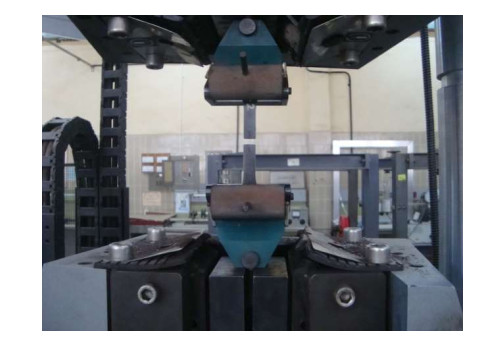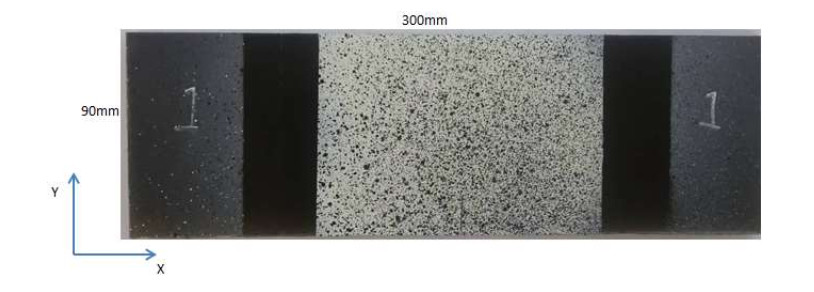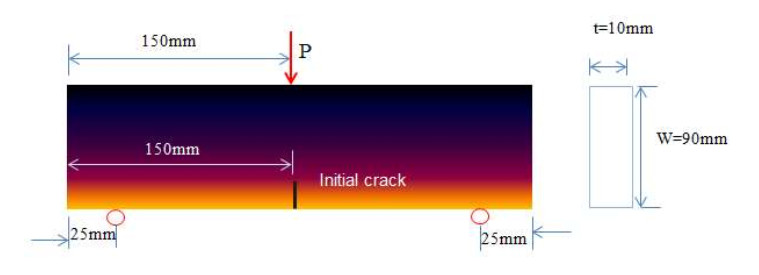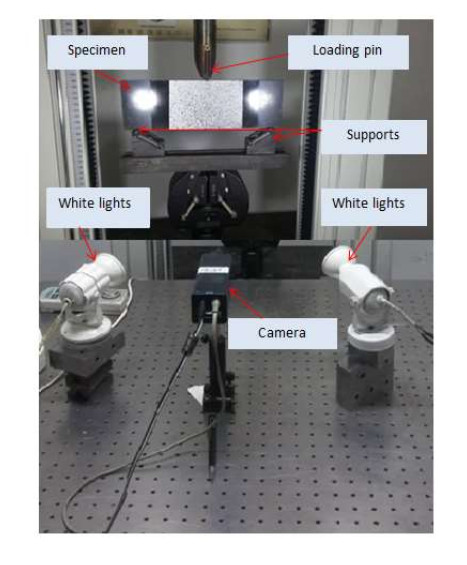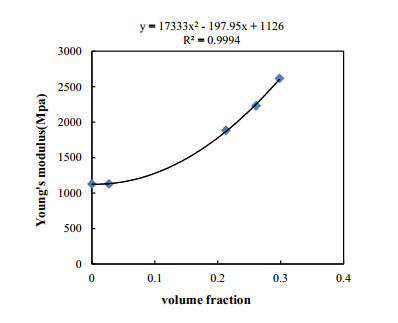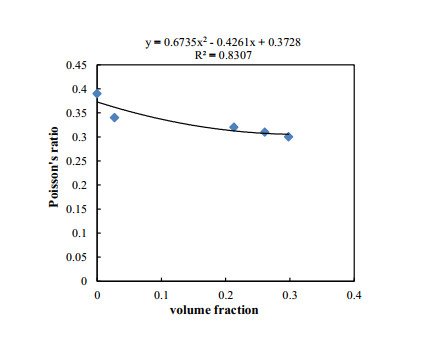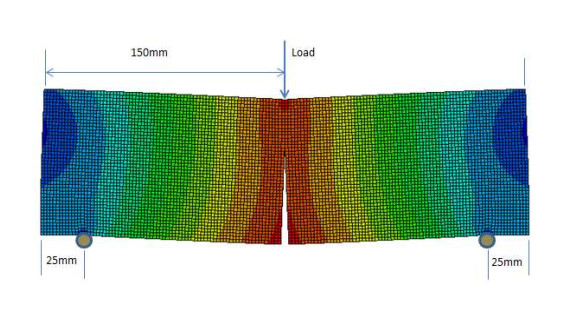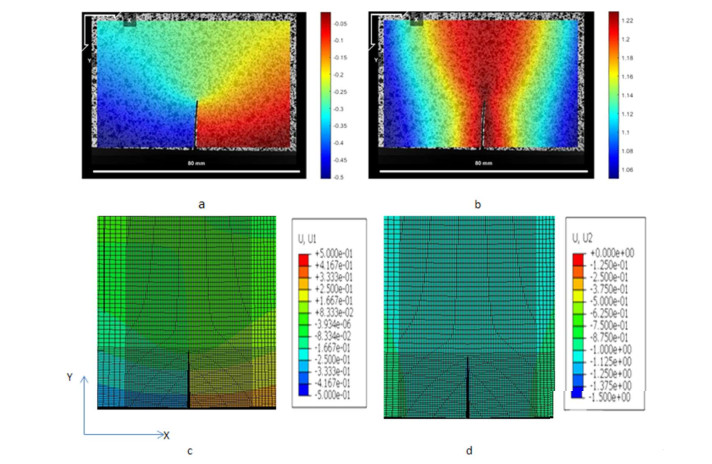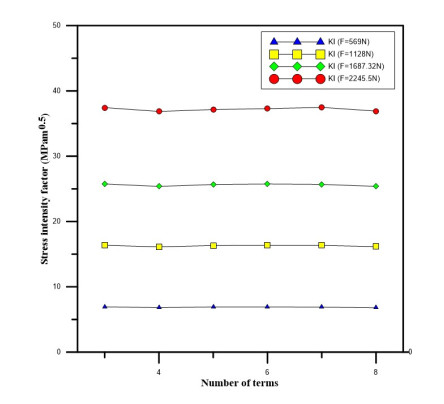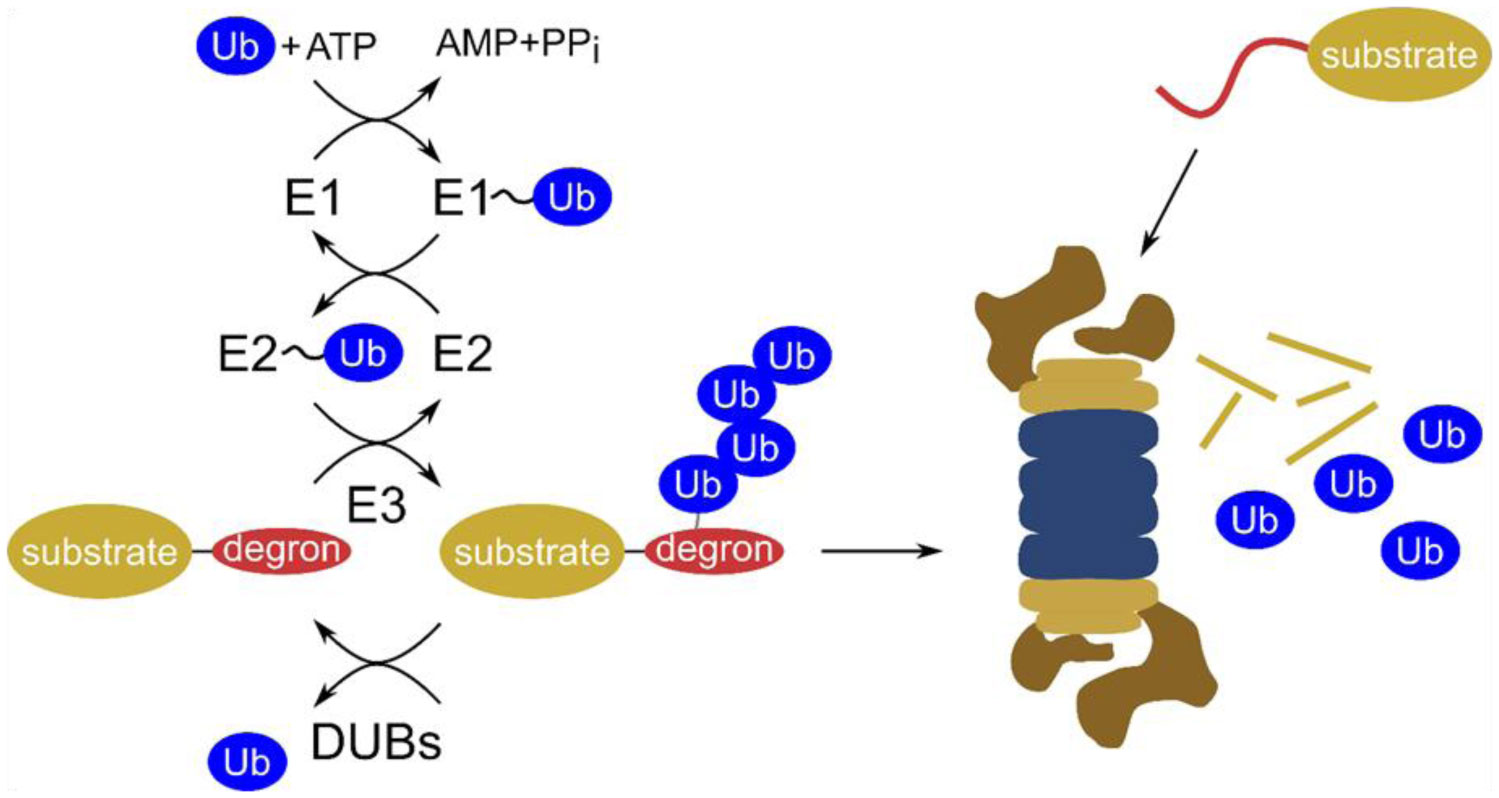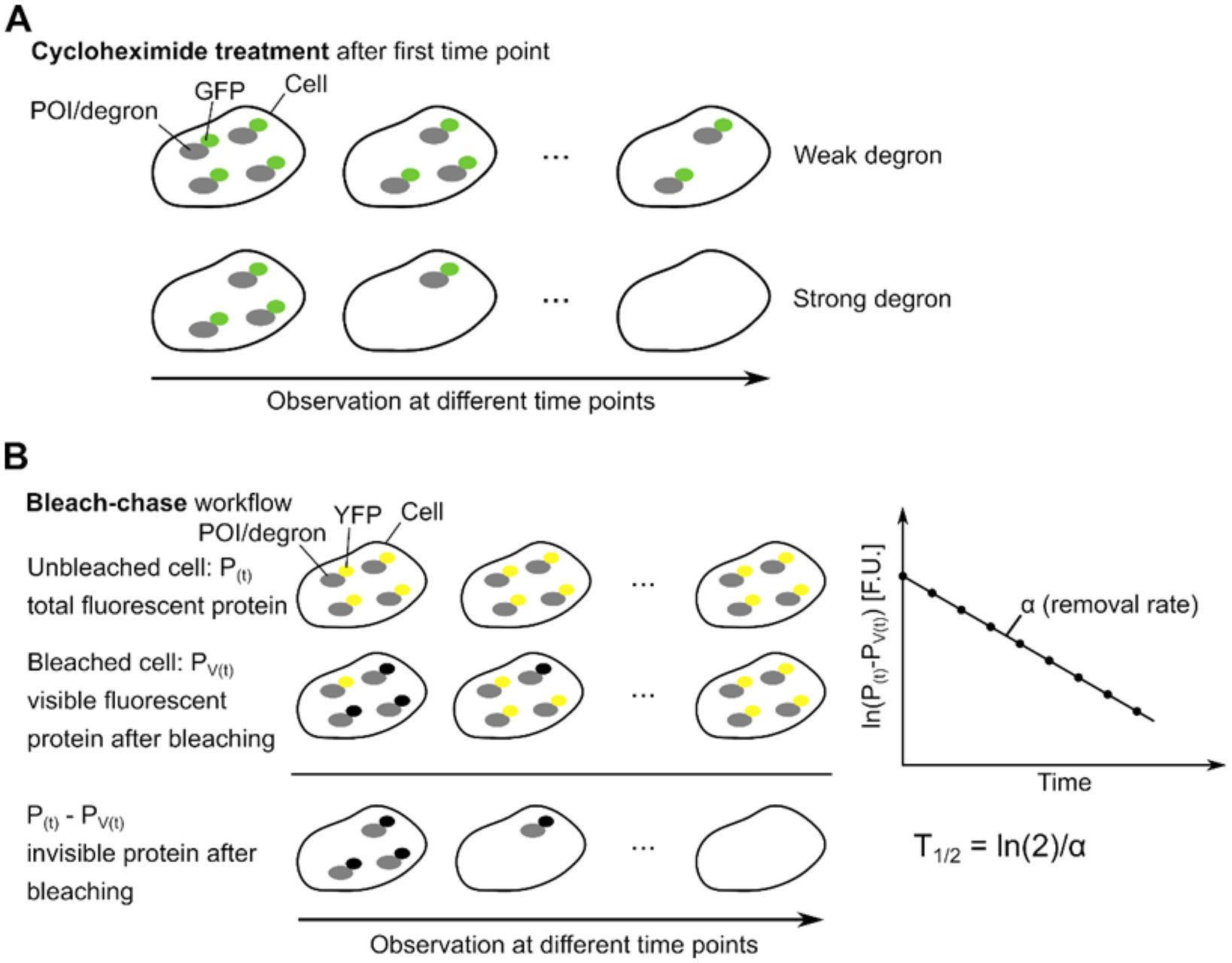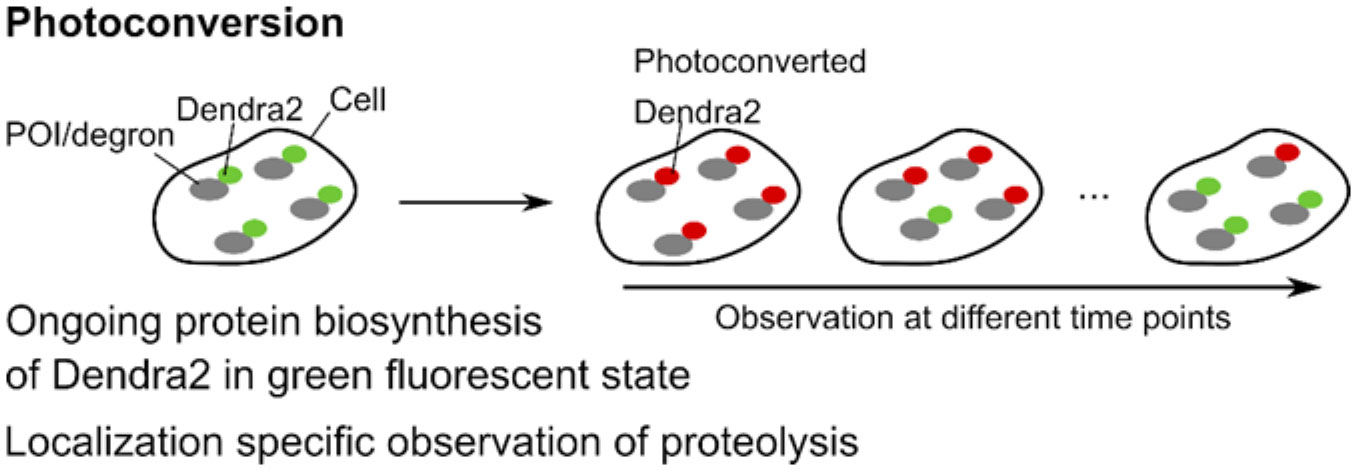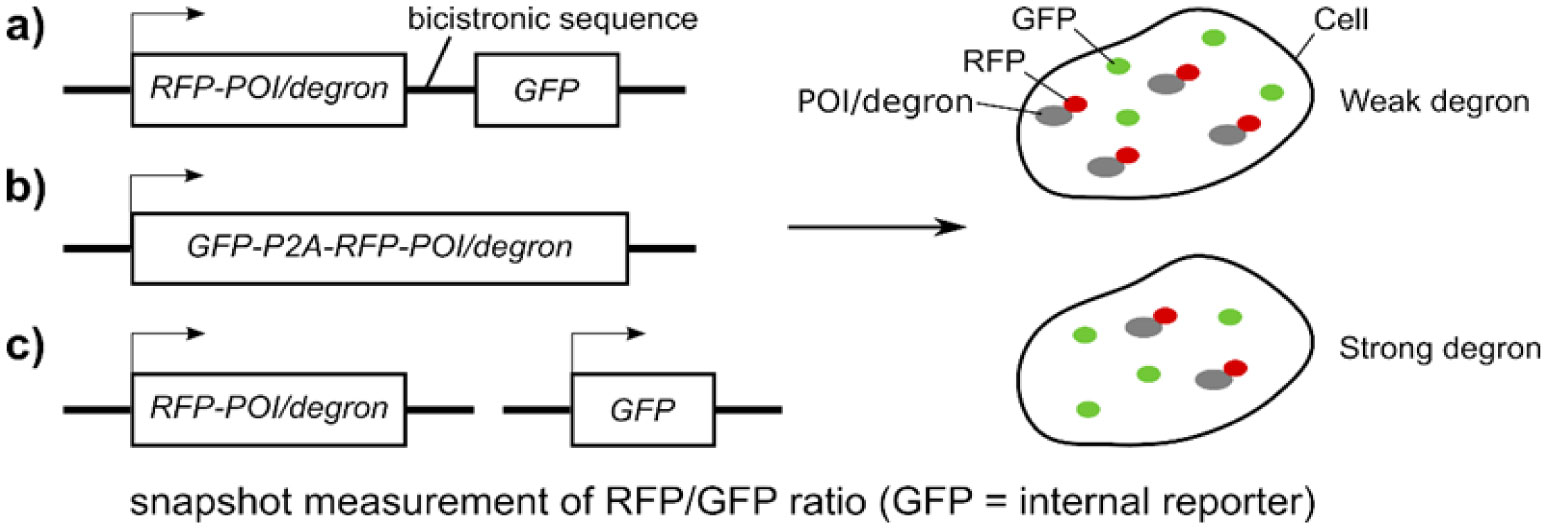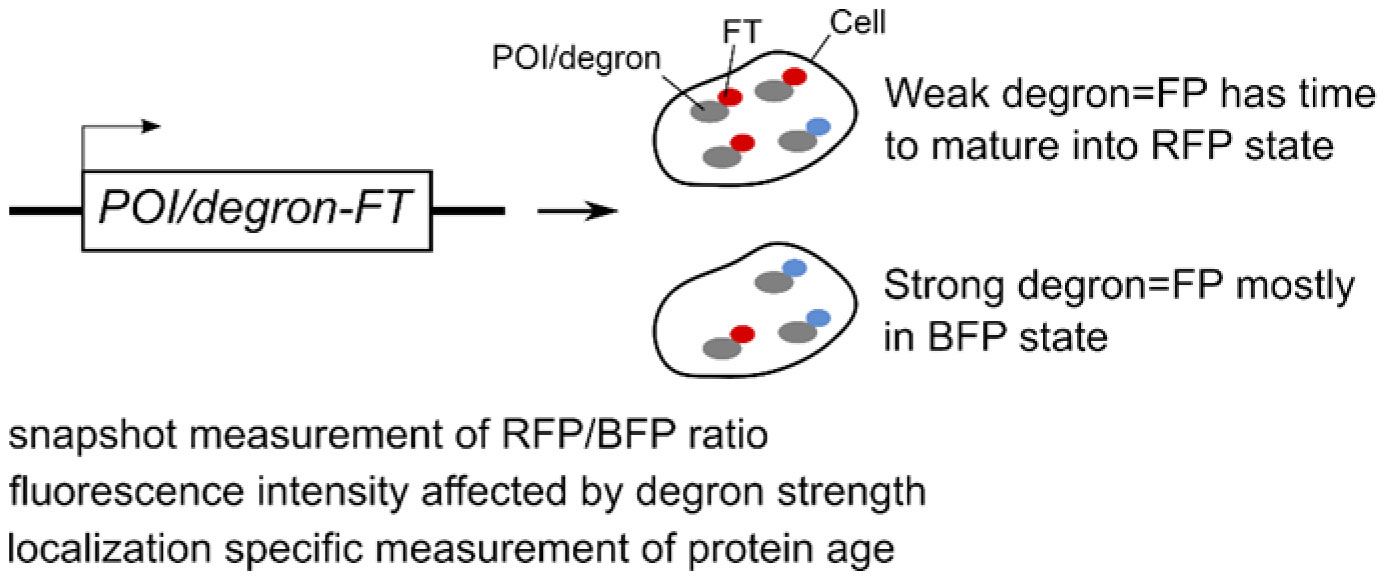|
[1]
|
Mishin AS, Belousov VV, Solntsev KM, et al. (2015) Novel uses of fluorescent proteins. Curr Opin Chem Biol 27: 1-9. doi: 10.1016/j.cbpa.2015.05.002

|
|
[2]
|
Shcherbakova DM, Baloban M, Verkhusha VV (2015) Near-infrared fluorescent proteins engineered from bacterial phytochromes. Curr Opin Chem Biol 27: 52-63. doi: 10.1016/j.cbpa.2015.06.005

|
|
[3]
|
Rodriguez EA, Campbell RE, Lin JY, et al. (2017) The growing and glowing toolbox of fluorescent and photoactive proteins. Trends Biochem Sci 42: 111-129. doi: 10.1016/j.tibs.2016.09.010

|
|
[4]
|
Hampton RY, Koning A, Wright R, et al. (1996) In vivo examination of membrane protein localization and degradation with green fluorescent protein. Proc Natl Acad Sci 93: 828-833. doi: 10.1073/pnas.93.2.828

|
|
[5]
|
Terskikh A, Fradkov A, Ermakova G, et al. (2000) ‘Fluorescent timer’: Protein that changes color with time. Science 290: 1585-1588. doi: 10.1126/science.290.5496.1585

|
|
[6]
|
Subach FV, Subach OM, Gundorov IS, et al. (2009) Monomeric fluorescent timers that change color from blue to red report on cellular trafficking. Nat Chem Biol 5: 118-126. doi: 10.1038/nchembio.138

|
|
[7]
|
Khmelinskii A, Keller PJ, Bartosik A, et al. (2012) Tandem fluorescent protein timers for in vivo analysis of protein dynamics. Nat Biotechnol 30: 708-714. doi: 10.1038/nbt.2281

|
|
[8]
|
Zhang L, Gurskaya NG, Merzlyak EM, et al. (2007) Method for real-time monitoring of protein degradation at the single cell level. Biotechniques 42: 446-450. doi: 10.2144/000112453

|
|
[9]
|
Taxis C, Hitt R, Park SH, et al. (2003) Use of modular substrates demonstrates mechanistic diversity and reveals differences in chaperone requirement of ERAD. J Biol Chem 278: 35903-35913. doi: 10.1074/jbc.M301080200

|
|
[10]
|
Balleza E, Kim JM, Cluzel P (2018) Systematic characterization of maturation time of fluorescent proteins in living cells. Nat Methods 15: 47-51. doi: 10.1038/nmeth.4509

|
|
[11]
|
Maeder CI, Hink MA, Kinkhabwala A, et al. (2007) Spatial regulation of Fus3 MAP kinase activity through a reaction-diffusion mechanism in yeast pheromone signalling. Nat Cell Biol 9: 1319-1326. doi: 10.1038/ncb1652

|
|
[12]
|
Subach OM, Cranfill PJ, Davidson MW, et al. (2011) An enhanced monomeric blue fluorescent protein with the high chemical stability of the chromophore. PLoS One 6: e28674. doi: 10.1371/journal.pone.0028674

|
|
[13]
|
Langan RA, Boyken SE, Ng AH, et al. (2019) De novo design of bioactive protein switches. Nature 572: 205-210. doi: 10.1038/s41586-019-1432-8

|
|
[14]
|
Subach OM, Gundorov IS, Yoshimura M, et al. (2008) Conversion of red fluorescent protein into a bright blue probe. Chem Biol 15: 1116-1124. doi: 10.1016/j.chembiol.2008.08.006

|
|
[15]
|
Wei J, Gibbs JS, Hickman HD, et al. (2015) Ubiquitous autofragmentation of fluorescent proteins creates abundant defective ribosomal products (DRiPs) for immunosurveillance. J Biol Chem 290: 16431-16439. doi: 10.1074/jbc.M115.658062

|
|
[16]
|
Goedhart J, Von Stetten D, Noirclerc-Savoye M, et al. (2012) Structure-guided evolution of cyan fluorescent proteins towards a quantum yield of 93%. Nat Commun 3: 751. doi: 10.1038/ncomms1738

|
|
[17]
|
Ng AH, Nguyen TH, Gómez-Schiavon M, et al. (2019) Modular and tunable biological feedback control using a de novo protein switch. Nature 572: 265-269. doi: 10.1038/s41586-019-1425-7

|
|
[18]
|
Heim R, Tsien RY (1996) Engineering green fluorescent protein for improved brightness, longer wavelengths and fluorescence resonance energy transfer. Curr Biol 6: 178-182. doi: 10.1016/S0960-9822(02)00450-5

|
|
[19]
|
Rizzo MA, Springer GH, Granada B, et al. (2004) An improved cyan fluorescent protein variant useful for FRET. Nat Biotechnol 22: 445-449. doi: 10.1038/nbt945

|
|
[20]
|
Cubitt AB, Woollenweber LA, Heim R (1998) Understanding structure-function relationships in the Aequorea victoria green fluorescent protein. Methods Cell Biol 58: 19-30. doi: 10.1016/S0091-679X(08)61946-9

|
|
[21]
|
Patterson G, Day RN, Piston D (2001) Fluorescent protein spectra. J Cell Sci 114: 837-838.
|
|
[22]
|
Cookson NA, Mather WH, Danino T, et al. (2011) Queueing up for enzymatic processing: correlated signaling through coupled degradation. Mol Syst Biol 7: 561. doi: 10.1038/msb.2011.94

|
|
[23]
|
Jungbluth M, Renicke C, Taxis C (2010) Targeted protein depletion in Saccharomyces cerevisiae by activation of a bidirectional degron. BMC Syst Biol 4: 176. doi: 10.1186/1752-0509-4-176

|
|
[24]
|
Taxis C, Stier G, Spadaccini R, et al. (2009) Efficient protein depletion by genetically controlled deprotection of a dormant N-degron. Mol Syst Biol 5: 267. doi: 10.1038/msb.2009.25

|
|
[25]
|
Hasenjäger S, Trauth J, Hepp S, et al. (2019) Optogenetic downregulation of protein levels with an ultrasensitive switch. ACS Synth Biol 8: 1026-1036. doi: 10.1021/acssynbio.8b00471

|
|
[26]
|
Cormack BP, Valdivia RH, Falkow S (1996) FACS-optimized mutants of the green fluorescent protein (GFP). Gene 173: 33-38. doi: 10.1016/0378-1119(95)00685-0

|
|
[27]
|
Pepperkok R, Squire A, Geley S, et al. (1999) Simultaneous detection of multiple green fluorescent proteins in live cells by fluorescence lifetime imaging microscopy. Curr Biol 9: 269-272. doi: 10.1016/S0960-9822(99)80117-1

|
|
[28]
|
Seefeldt B, Kasper R, Seidel T, et al. (2008) Fluorescent proteins for single-molecule fluorescence applications. J Biophotonics 1: 74-82. doi: 10.1002/jbio.200710024

|
|
[29]
|
Sarkisyan KS, Goryashchenko AS, Lidsky PV, et al. (2015) Green fluorescent protein with anionic tryptophan-based chromophore and long fluorescence lifetime. Biophys J 109: 380-389. doi: 10.1016/j.bpj.2015.06.018

|
|
[30]
|
Halter M, Tona A, Bhadriraju K, et al. (2007) Automated live cell imaging of green fluorescent protein degradation in individual fibroblasts. Cytom Part A: J Int Soc Anal Cytol 71: 827-834. doi: 10.1002/cyto.a.20461

|
|
[31]
|
Yen HCS, Xu Q, Chou DM, et al. (2008) Global protein stability profiling in mammalian cells. Science 322: 918-923. doi: 10.1126/science.1160489

|
|
[32]
|
Yen HCS, Elledge SJ (2008) Identification of SCF ubiquitin ligase substrates by global protein stability profiling. Science 322: 923-929. doi: 10.1126/science.1160462

|
|
[33]
|
Reichard EL, Chirico GG, Dewey WJ, et al. (2016) Substrate ubiquitination controls the unfolding ability of the proteasome. J Biol Chem 291: 18547-18561. doi: 10.1074/jbc.M116.720151

|
|
[34]
|
Lin HC, Yeh CW, Chen YF, et al. (2018) C-terminal end-directed protein elimination by CRL2 ubiquitin ligases. Mol Cell 70: 602-613. doi: 10.1016/j.molcel.2018.04.006

|
|
[35]
|
Khmelinskii A, Meurer M, Ho CT, et al. (2016) Incomplete proteasomal degradation of green fluorescent proteins in the context of tandem fluorescent protein timers. Mol Biol Cell 27: 360-370. doi: 10.1091/mbc.e15-07-0525

|
|
[36]
|
Krentz NAJ, van Hoof D, Li Z, et al. (2017) Phosphorylation of NEUROG3 links endocrine differentiation to the cell cycle in pancreatic progenitors. Dev Cell 41: 129-142. doi: 10.1016/j.devcel.2017.02.006

|
|
[37]
|
Link CD, Fonte V, Hiester B, et al. (2006) Conversion of green fluorescent protein into a toxic, aggregation-prone protein by C-terminal addition of a short peptide. J Biol Chem 281: 1808-1816. doi: 10.1074/jbc.M505581200

|
|
[38]
|
Papagiannakis A, de Jonge JJ, Zhang Z, et al. (2017) Quantitative characterization of the auxin-inducible degron: a guide for dynamic protein depletion in single yeast cells. Sci Rep 7: 1-13. doi: 10.1038/s41598-017-04791-6

|
|
[39]
|
Usherenko S, Stibbe H, Muscò M, et al. (2014) Photo-sensitive degron variants for tuning protein stability by light. BMC Syst Biol 8: 128. doi: 10.1186/s12918-014-0128-9

|
|
[40]
|
Qian SB, Ott DE, Schubert U, et al. (2002) Fusion proteins with COOH-terminal ubiquitin are stable and maintain dual functionality in vivo. J Biol Chem 277: 38818-38826. doi: 10.1074/jbc.M205547200

|
|
[41]
|
Li X, Zhao X, Fang Y, et al. (1998) Generation of destabilized green fluorescent protein as a transcription reporter. J Biol Chem 273: 34970-34975. doi: 10.1074/jbc.273.52.34970

|
|
[42]
|
Iconomou M, Saunders DN (2016) Systematic approaches to identify E3 ligase substrates. Biochem J 473: 4083-4101. doi: 10.1042/BCJ20160719

|
|
[43]
|
Shaner NC, Lin MZ, McKeown MR, et al. (2008) Improving the photostability of bright monomeric orange and red fluorescent proteins. Nat Methods 5: 545-551. doi: 10.1038/nmeth.1209

|
|
[44]
|
Zacharias DA, Violin JD, Newton AC, et al. (2002) Partitioning of lipid-modified monomeric GFPs into membrane microdomains of live cells. Science 296: 913-916. doi: 10.1126/science.1068539

|
|
[45]
|
Shimomura O, Johnson F H, Saiga Y (1962) Extraction, purification and properties of aequorin, a bioluminescent protein from the luminous hydromedusan, Aequorea. J Cell Comp Physiol 59: 223-239. doi: 10.1002/jcp.1030590302

|
|
[46]
|
Niwa H, Inouye S, Hirano T, et al. (1996) Chemical nature of the light emitter of the Aequorea green fluorescent protein. Proc Natl Acad Sci 93: 13617-13622. doi: 10.1073/pnas.93.24.13617

|
|
[47]
|
Prasher DC, Eckenrode VK, Ward WW, et al. (1992) Primary structure of the Aequorea victoria green-fluorescent protein. Gene 111: 229-233. doi: 10.1016/0378-1119(92)90691-H

|
|
[48]
|
Patterson GH, Knobel SM, Sharif WD, et al. (1997) Use of the green fluorescent protein and its mutants in quantitative fluorescence microscopy. Biophys J 73: 2782-2790. doi: 10.1016/S0006-3495(97)78307-3

|
|
[49]
|
Iizuka R, Yamagishi-Shirasaki M, Funatsu T (2011) Kinetic study of de novo chromophore maturation of fluorescent proteins. Anal Biochem 414: 173-178. doi: 10.1016/j.ab.2011.03.036

|
|
[50]
|
Yoo TH, Link AJ, Tirrell DA (2007) Evolution of a fluorinated green fluorescent protein. Proc Natl Acad Sci 104: 13887-13890. doi: 10.1073/pnas.0701904104

|
|
[51]
|
Pédelacq JD, Cabantous S, Tran T, et al. (2006) Engineering and characterization of a superfolder green fluorescent protein. Nat Biotechnol 24: 79-88. doi: 10.1038/nbt1172

|
|
[52]
|
Durrieu L, Kirrmaier D, Schneidt T, et al. (2018) Bicoid gradient formation mechanism and dynamics revealed by protein lifetime analysis. Mol Syst Biol 14: e8355. doi: 10.15252/msb.20188355

|
|
[53]
|
Kowalski L, Bragoszewski P, Khmelinskii A, et al. (2018) Determinants of the cytosolic turnover of mitochondrial intermembrane space proteins. BMC Biol 16: 66. doi: 10.1186/s12915-018-0536-1

|
|
[54]
|
Dederer V, Khmelinskii A, Huhn AG, et al. (2019) Cooperation of mitochondrial and ER factors in quality control of tail-anchored proteins. Elife 8: e45506. doi: 10.7554/eLife.45506

|
|
[55]
|
Alber AB, Paquet ER, Biserni M, et al. (2018) Single live cell monitoring of protein turnover reveals intercellular variability and cell-cycle dependence of degradation rates. Mol Cell 71: 1079-1091. doi: 10.1016/j.molcel.2018.07.023

|
|
[56]
|
Zhang H, Linster E, Gannon L, et al. (2019) Tandem fluorescent protein timers for noninvasive relative protein lifetime measurement in plants. Plant Physiol 180: 718-731. doi: 10.1104/pp.19.00051

|
|
[57]
|
Fernandez-Rodriguez J, Voigt CA (2016) Post-translational control of genetic circuits using Potyvirus proteases. Nucleic Acids Res 44: 6493-6502. doi: 10.1093/nar/gkw537

|
|
[58]
|
Yu H, Singh Gautam AKS, Wilmington SR, et al. (2016) Conserved sequence preferences contribute to substrate recognition by the proteasome. J Biol Chem 291: 14526-14539. doi: 10.1074/jbc.M116.727578

|
|
[59]
|
Donà E, Barry JD, Valentin G, et al. (2013) Directional tissue migration through a self-generated chemokine gradient. Nature 503: 285-289. doi: 10.1038/nature12635

|
|
[60]
|
Khmelinskii A, Blaszczak E, Pantazopoulou M, et al. (2014) Protein quality control at the inner nuclear membrane. Nature 516: 410-413. doi: 10.1038/nature14096

|
|
[61]
|
Kats I, Khmelinskii A, Kschonsak M, et al. (2018) Mapping degradation signals and pathways in a eukaryotic N-terminome. Mol Cell 70: 488-501. doi: 10.1016/j.molcel.2018.03.033

|
|
[62]
|
Castells-Ballester J, Zatorska E, Meurer M, et al. (2018) Monitoring protein dynamics in protein o-mannosyltransferase mutants in vivo by tandem fluorescent protein timers. Molecules 23: 2622. doi: 10.3390/molecules23102622

|
|
[63]
|
Heim R, Cubitt AB, Tsien RY (1995) Improved green fluorescence. Nature 373: 663-664. doi: 10.1038/373663b0

|
|
[64]
|
Benanti JA, Cheung SK, Brady MC, et al. (2007) A proteomic screen reveals SCFGrr1 targets that regulate the glycolytic-gluconeogenic switch. Nat Cell Biol 9: 1184-1191. doi: 10.1038/ncb1639

|
|
[65]
|
Costantini LM, Baloban M, Markwardt ML, et al. (2015) A palette of fluorescent proteins optimized for diverse cellular environments. Nat Commun 6: 7670. doi: 10.1038/ncomms8670

|
|
[66]
|
Kremers GJ, Goedhart J, van den Heuvel DJ, et al. (2007) Improved green and blue fluorescent proteins for expression in bacteria and mammalian cells. Biochemistry 46: 3775-3783. doi: 10.1021/bi0622874

|
|
[67]
|
Sekar K, Gentile AM, Bostick JW, et al. (2016) N-terminal-based targeted, inducible protein degradation in Escherichia coli. PLoS One 11: e0149746. doi: 10.1371/journal.pone.0149746

|
|
[68]
|
Shaner NC, Lambert GG, Chammas A, et al. (2013) A bright monomeric green fluorescent protein derived from Branchiostoma lanceolatum. Nat Methods 10: 407-409. doi: 10.1038/nmeth.2413

|
|
[69]
|
Molina RS, Tran TM, Campbell RE, et al. (2017) Blue-shifted green fluorescent protein homologues are brighter than enhanced green fluorescent protein under two-photon excitation. J Phys Chem Lett 8: 2548-2554. doi: 10.1021/acs.jpclett.7b00960

|
|
[70]
|
Griesbeck O, Baird GS, Campbell RE, et al. (2001) Reducing the environmental sensitivity of yellow fluorescent protein mechanism and applications. J Biol Chem 276: 29188-29194. doi: 10.1074/jbc.M102815200

|
|
[71]
|
Wiens MD, Hoffmann F, Chen Y, et al. (2018) Enhancing fluorescent protein photostability through robot-assisted photobleaching. Integr Biol 10: 419-428. doi: 10.1039/C8IB00063H

|
|
[72]
|
Cranfill PJ, Sell BR, Baird MA, et al. (2016) Quantitative assessment of fluorescent proteins. Nat Methods 13: 557-562. doi: 10.1038/nmeth.3891

|
|
[73]
|
Miyawaki A, Griesbeck O, Heim R, et al. (1999) Dynamic and quantitative Ca2+ measurements using improved cameleons. Proc Natl Acad Sci 96: 2135-2140. doi: 10.1073/pnas.96.5.2135

|
|
[74]
|
Ormö M, Cubitt AB, Kallio K, et al. (1996) Crystal structure of the aequorea victoria green fluorescent protein. Science 273: 1392-1395. doi: 10.1126/science.273.5280.1392

|
|
[75]
|
Rekas A, Alattia JR, Nagai T, et al. (2002) Crystal structure of venus, a yellow fluorescent protein with improved maturation and reduced environmental sensitivity. J Biol Chem 277: 50573-50578. doi: 10.1074/jbc.M209524200

|
|
[76]
|
Zhao W, Pferdehirt L, Segatori L (2018) Quantitatively predictable control of cellular protein levels through proteasomal degradation. ACS Synth Biol 7: 540-552. doi: 10.1021/acssynbio.7b00325

|
|
[77]
|
Eden E, Geva-Zatorsky N, Issaeva I, et al. (2011) Proteome half-life dynamics in living human cells. Science 331: 764-768. doi: 10.1126/science.1199784

|
|
[78]
|
Nagai T, Ibata K, Park ES, et al. (2002) A variant of yellow fluorescent protein with fast and efficient maturation for cell-biological applications. Nat Biotechnol 20: 87-90. doi: 10.1038/nbt0102-87

|
|
[79]
|
Chassin H, Müller M, Tigges M, et al. (2019) A modular degron library for synthetic circuits in mammalian cells. Nat Commun 10: 2013. doi: 10.1038/s41467-019-09974-5

|
|
[80]
|
Shaner NC, Campbell RE, Steinbach P a, et al. (2004) Improved monomeric red, orange and yellow fluorescent proteins derived from Discosoma sp. red fluorescent protein. Nat Biotechnol 22: 1567-1572. doi: 10.1038/nbt1037

|
|
[81]
|
Merzlyak EM, Goedhart J, Shcherbo D, et al. (2007) Bright monomeric red fluorescent protein with an extended fluorescence lifetime. Nat Methods 4: 555-557. doi: 10.1038/nmeth1062

|
|
[82]
|
Renicke C, Schuster D, Usherenko S, et al. (2013) A LOV2 domain-based optogenetic tool to control protein degradation and cellular function. Chem Biol 20: 619-626. doi: 10.1016/j.chembiol.2013.03.005

|
|
[83]
|
Strack RL, Strongin DE, Bhattacharyya D, et al. (2008) A noncytotoxic DsRed variant for whole-cell labeling. Nat Methods 5: 955-957. doi: 10.1038/nmeth.1264

|
|
[84]
|
Bindels DS, Haarbosch L, van Weeren L, et al. (2017) mScarlet: a bright monomeric red fluorescent protein for cellular imaging. Nat Methods 14: 53-56. doi: 10.1038/nmeth.4074

|
|
[85]
|
Campbell RE, Tour O, Palmer AE, et al. (2002) A monomeric red fluorescent protein. Proc Natl Acad Sci 99: 7877-7882. doi: 10.1073/pnas.082243699

|
|
[86]
|
Shcherbo D, Murphy CS, Ermakova GV, et al. (2009) Far-red fluorescent tags for protein imaging in living tissues. Biochem J 418: 567-574. doi: 10.1042/BJ20081949

|
|
[87]
|
Shcherbo D, Merzlyak EM, Chepurnykh TV, et al. (2007) Bright far-red fluorescent protein for whole-body imaging. Nat Methods 4: 741-746. doi: 10.1038/nmeth1083

|
|
[88]
|
Filonov GS, Piatkevich KD, Ting L-M, et al. (2011) Bright and stable near-infrared fluorescent protein for in vivo imaging. Nat Biotechnol 29: 757-761. doi: 10.1038/nbt.1918

|
|
[89]
|
Nemet I, Ropelewski P, Imanishi Y (2015) Applications of phototransformable fluorescent proteins for tracking the dynamics of cellular components. Photochem Photobiol Sci 14: 1787-1806. doi: 10.1039/C5PP00174A

|
|
[90]
|
Vilchez D, Saez I, Dillin A (2014) The role of protein clearance mechanisms in organismal ageing and age-related diseases. Nat Commun 5: 5659. doi: 10.1038/ncomms6659

|
|
[91]
|
Hershko A, Ciechanover A (1998) The ubiquitin system. Annu Rev Biochem 67: 425-479. doi: 10.1146/annurev.biochem.67.1.425

|
|
[92]
|
Pickart CM (2004) Back to the future with ubiquitin. Cell 116: 181-190. doi: 10.1016/S0092-8674(03)01074-2

|
|
[93]
|
Ardley HC, Robinson PA (2005) E3 ubiquitin ligases. Essays Biochem 41: 15-30. doi: 10.1042/EB0410015

|
|
[94]
|
Metzger MB, Pruneda JN, Klevit RE, et al. (2014) RING-type E3 ligases: Master manipulators of E2 ubiquitin-conjugating enzymes and ubiquitination. Biochim Biophys Acta-Mol Cell Res 1843: 47-60. doi: 10.1016/j.bbamcr.2013.05.026

|
|
[95]
|
Thrower JS, Hoffman L, Rechsteiner M, et al. (2000) Recognition of the polyubiquitin proteolytic signal. EMBO J 19: 94-102. doi: 10.1093/emboj/19.1.94

|
|
[96]
|
Yau R, Rape M (2016) The increasing complexity of the ubiquitin code. Nat Cell Biol 18: 579-586. doi: 10.1038/ncb3358

|
|
[97]
|
Kwon YT, Ciechanover A (2017) The ubiquitin code in the ubiquitin-proteasome system and autophagy. Trends Biochem Sci 42: 873-886. doi: 10.1016/j.tibs.2017.09.002

|
|
[98]
|
Yu H, Matouschek A (2017) Recognition of client proteins by the proteasome. Annu Rev Biophys 46: 149-173. doi: 10.1146/annurev-biophys-070816-033719

|
|
[99]
|
Varshavsky A (1991) Naming a targeting signal. Cell 64: 13-15. doi: 10.1016/0092-8674(91)90202-A

|
|
[100]
|
Ravid T, Hochstrasser M (2008) Diversity of degradation signals in the ubiquitin-proteasome system. Nat Rev Mol Cell Biol 9: 679-689. doi: 10.1038/nrm2468

|
|
[101]
|
Tomita T, Matouschek A (2019) Substrate selection by the proteasome through initiation regions. Protein Sci 28: 1222-1232.
|
|
[102]
|
Jariel-Encontre I, Bossis G, Piechaczyk M (2008) Ubiquitin-independent degradation of proteins by the proteasome. Biochim Biophys Acta - Rev Cancer 1786: 153-177. doi: 10.1016/j.bbcan.2008.05.004

|
|
[103]
|
Erales J, Coffino P (2014) Ubiquitin-independent proteasomal degradation. Biochim Biophys Acta-Mol Cell Res 1843: 216-221. doi: 10.1016/j.bbamcr.2013.05.008

|
|
[104]
|
Dohmen RJ, Willers I, Marques AJ (2007) Biting the hand that feeds: Rpn4-dependent feedback regulation of proteasome function. Biochim Biophys Acta-Mol Cell Res 1773: 1599-1604. doi: 10.1016/j.bbamcr.2007.05.015

|
|
[105]
|
Ha SW, Ju D, Xie Y (2012) The N-terminal domain of Rpn4 serves as a portable ubiquitin-independent degron and is recognized by specific 19S RP subunits. Biochem Biophys Res Commun 419: 226-231. doi: 10.1016/j.bbrc.2012.01.152

|
|
[106]
|
Lutz AP, Schladebeck S, Renicke C, et al. (2018) Proteasome activity is influenced by the HECT_2 protein Ipa1 in budding yeast. Genetics 209: 157-171. doi: 10.1534/genetics.118.300744

|
|
[107]
|
Scheffer J, Hasenjäger S, Taxis C (2019) Degradation of integral membrane proteins modified with the photosensitive degron module requires the cytosolic endoplasmic reticulum–associated degradation pathway. Mol Biol Cell 30: 2558-2570. doi: 10.1091/mbc.E18-12-0754

|
|
[108]
|
Hitchcock AL, Krebber H, Frietze S, et al. (2001) The conserved npl4 protein complex mediates proteasome-dependent membrane-bound transcription factor activation. Mol Biol Cell 12: 3226-3241. doi: 10.1091/mbc.12.10.3226

|
|
[109]
|
Hoppe T, Matuschewski K, Rape M, et al. (2001) Activation of a membrane-bound transcription factor by regulated ubiquitin/proteasome-dependent processing. Cell 14: 148-151.
|
|
[110]
|
Leestemaker Y, Ovaa H (2017) Tools to investigate the ubiquitin proteasome system. Drug Discov Today Technol 26: 25-31. doi: 10.1016/j.ddtec.2017.11.006

|
|
[111]
|
Conole D, Mondal M, Majmudar JD, et al. (2019) Recent developments in cell permeable deubiquitinating enzyme activity-based probes. Front Chem 7: 876. doi: 10.3389/fchem.2019.00876

|
|
[112]
|
Hewings DS, Flygare JA, Bogyo M, et al. (2017) Activity-based probes for the ubiquitin conjugation-deconjugation machinery: new chemistries, new tools, and new insights. FEBS J 284: 1555-1576. doi: 10.1111/febs.14039

|
|
[113]
|
Ella H, Reiss Y, Ravid T (2019) The hunt for degrons of the 26S proteasome. Biomolecules 9: 230. doi: 10.3390/biom9060230

|
|
[114]
|
Chalfie M, Tu Y, Euskirchen G, et al. (1994) Green fluorescent protein as a marker for gene expression. Science 263: 802-805. doi: 10.1126/science.8303295

|
|
[115]
|
Wang S, Hazelrigg T (1994) Implications for bcd mRNA localization from spatial distribution of exu protein in Drosophila oogenesis. Nature 369: 400-403. doi: 10.1038/369400a0

|
|
[116]
|
Cronin SR, Hampton RY (1999) Measuring protein degradation with green fluorescent protein. Methods Enzymol 302: 58-73. doi: 10.1016/S0076-6879(99)02010-8

|
|
[117]
|
Cronin SR, Khoury A, Ferry DK, et al. (2000) Regulation of HMG-CoA reductase degradation requires the P-type ATPase Cod1p/Spf1p. J Cell Biol 148: 915-924. doi: 10.1083/jcb.148.5.915

|
|
[118]
|
Jiang X, Coffino P, Li X (2004) Development of a method for screening short-lived proteins using green fluorescent protein. Genome Biol 5: R81. doi: 10.1186/gb-2004-5-10-r81

|
|
[119]
|
Hampton RY, Rine J (1994) Regulated degradation of HMG-CoA reductase, an integral membrane protein of the endoplasmic reticulum, in yeast. J Cell Biol 125: 299-312. doi: 10.1083/jcb.125.2.299

|
|
[120]
|
Gierisch ME, Giovannucci TA, Dantuma NP (2020) Reporter-based screens for the ubiquitin/proteasome system. Front Chem 8: 64. doi: 10.3389/fchem.2020.00064

|
|
[121]
|
Dantuma NP, Lindsten K, Glas R, et al. (2000) Short-lived green fluorescent proteins for quantifying ubiquitin/proteasome-dependent proteolysis in living cells. Nat Biotechnol 18: 538-543. doi: 10.1038/75406

|
|
[122]
|
van Wijk SJ, Fulda S, Dikic I, et al. (2019) Visualizing ubiquitination in mammalian cells. EMBO Rep 20: e46520. doi: 10.15252/embr.201846520

|
|
[123]
|
Rajan S, Djambazian H, Dang HCP, et al. (2011) The living microarray: A high-throughput platform for measuring transcription dynamics in single cells. BMC Genomics 12: 115. doi: 10.1186/1471-2164-12-115

|
|
[124]
|
Chou TF, Deshaies RJ (2011) Quantitative cell-based protein degradation assays to identify and classify drugs that target the ubiquitin-proteasome system. J Biol Chem 286: 16546-16554. doi: 10.1074/jbc.M110.215319

|
|
[125]
|
He L, Binari R, Huang J, et al. (2019) In vivo study of gene expression with an enhanced dual-color fluorescent transcriptional timer. Elife 8: e46181. doi: 10.7554/eLife.46181

|
|
[126]
|
Mei L, Fan Y, Lv X, et al. (2018) Long-term in vivo recording of circadian rhythms in brains of freely moving mice. Proc Natl Acad Sci 115: 4276-4281. doi: 10.1073/pnas.1717735115

|
|
[127]
|
Ando H, Hirose M, Kurosawa G, et al. (2017) Time-lapse imaging of microRNA activity reveals the kinetics of microRNA activation in single living cells. Sci Rep 7: 1-16. doi: 10.1038/s41598-016-0028-x

|
|
[128]
|
Sharifnia P, Kim KW, Wu Z, et al. (2017) Distinct cis elements in the 3′ UTR of the C. elegans cebp-1 mRNA mediate its regulation in neuronal development. Dev Biol 429: 240-248. doi: 10.1016/j.ydbio.2017.06.022

|
|
[129]
|
Toneff MJ, Sreekumar A, Tinnirello A, et al. (2016) The Z-cad dual fluorescent sensor detects dynamic changes between the epithelial and mesenchymal cellular states. BMC Biol 14: 47. doi: 10.1186/s12915-016-0269-y

|
|
[130]
|
Stacer AC, Wang H, Fenner J, et al. (2015) Imaging reporters for proteasome activity identify tumor- and metastasis-initiating cells. Mol Imaging 14: 414-428. doi: 10.2310/7290.2015.00016

|
|
[131]
|
Langenbach KJ, Elliott JT, Tona A, et al. (2006) Thin films of type 1 collagen for cell by cell analysis of morphology and tenascin-C promoter activity. BMC Biotechnol 6: 14. doi: 10.1186/1472-6750-6-14

|
|
[132]
|
Raser JM, O'Shea EK (2005) Noise in gene expression: Origins, consequences, and control. Science 309: 2010-2013. doi: 10.1126/science.1105891

|
|
[133]
|
Deng W, Bates JA, Wei H, et al. (2020) Tunable light and drug induced depletion of target proteins. Nat Commun 11: 304. doi: 10.1038/s41467-019-14160-8

|
|
[134]
|
Gilon T, Chomsky O, Kulka RG (2000) Degradation signals recognized by the Ubc6p-Ubc7p ubiquitin-conjugating enzyme pair. Mol Cell Biol 20: 7214-7219. doi: 10.1128/MCB.20.19.7214-7219.2000

|
|
[135]
|
Bence NF, Sampat RM, Kopito RR (2001) Impairment of the ubiquitin-proteasome system by protein aggregation. Science 292: 1552-1555. doi: 10.1126/science.292.5521.1552

|
|
[136]
|
Schipper-Krom S, Sanz AS, van Bodegraven EJ, et al. (2019) Visualizing proteasome activity and intracellular localization using fluorescent proteins and activity-based probes. Front Mol Biosci 6: 56. doi: 10.3389/fmolb.2019.00056

|
|
[137]
|
Dyson MR (2016) Fundamentals of expression in mammalian cells. Advances in Experimental Medicine and Biology Switzerland: Springer, 217-224. doi: 10.1007/978-3-319-27216-0_14

|
|
[138]
|
Voss U, Larrieu A, Wells DM (2013) From jellyfish to biosensors: The use of fluorescent proteins in plants. Int J Dev Biol 57: 525-533. doi: 10.1387/ijdb.130208dw

|
|
[139]
|
Colman-Lerner A, Gordon A, Serra E, et al. (2005) Regulated cell-to-cell variation in a cell-fate decision system. Nature 437: 699-706. doi: 10.1038/nature03998

|
|
[140]
|
Gordon A, Colman-lerner A, Chin TE, et al. (2007) Single-cell quantification of molecules and rates using open-source microscope-based cytometry. Nat Methods 4: 175-181. doi: 10.1038/nmeth1008

|
|
[141]
|
Grossmann G, Krebs M, Maizel A, et al. (2018) Green light for quantitative live-cell imaging in plants. J Cell Sci 131: jcs209270. doi: 10.1242/jcs.209270

|
|
[142]
|
Croce AC, Bottiroli G (2017) Autofluorescence spectroscopy for monitoring metabolism in animal cells and tissues. Histochemistry of Single Molecules New York: Humana Press, 15-43. doi: 10.1007/978-1-4939-6788-9_2

|
|
[143]
|
Feuchtinger A, Walch A, Dobosz M (2016) Deep tissue imaging: a review from a preclinical cancer research perspective. Histochem Cell Biol 146: 781-806. doi: 10.1007/s00418-016-1495-7

|
|
[144]
|
Zhao W, Bonem M, McWhite C, et al. (2014) Sensitive detection of proteasomal activation using the Deg-On mammalian synthetic gene circuit. Nat Commun 5: 3612. doi: 10.1038/ncomms4612

|
|
[145]
|
Adam V, Nienhaus K, Bourgeois D, et al. (2009) Structural basis of enhanced photoconversion yield in green fluorescent protein-like protein Dendra2. Biochemistry 48: 4905-4915. doi: 10.1021/bi900383a

|
|
[146]
|
Adam V, Moeyaert B, David CC, et al. (2011) Rational design of photoconvertible and biphotochromic fluorescent proteins for advanced microscopy applications. Chem Biol 18: 1241-1251. doi: 10.1016/j.chembiol.2011.08.007

|
|
[147]
|
Gurskaya NG, Verkhusha VV, Shcheglov AS, et al. (2006) Engineering of a monomeric green-to-red photoactivatable fluorescent protein induced by blue light. Nat Biotechnol 24: 461-465. doi: 10.1038/nbt1191

|
|
[148]
|
Hoi H, Shaner NC, Davidson MW, et al. (2010) A monomeric photoconvertible fluorescent protein for imaging of dynamic protein localization. J Mol Biol 401: 776-791. doi: 10.1016/j.jmb.2010.06.056

|
|
[149]
|
Hamer G, Matilainen O, Holmberg CI (2010) A photoconvertible reporter of the ubiquitin-proteasome system in vivo. Nat Methods 7: 473-478. doi: 10.1038/nmeth.1460

|
|
[150]
|
Patterson GH, Lippincott-Schwartz J (2002) A photoactivatable GFP for selective photolabeling of proteins and cells. Science 297: 1873-1877. doi: 10.1126/science.1074952

|
|
[151]
|
Heidary DK, Fox A, Richards CI, et al. (2017) A high-throughput screening assay using a photoconvertable protein for identifying inhibitors of transcription, translation, or proteasomal degradation. SLAS Discov 22: 399-407.
|
|
[152]
|
Kiuchi T, Nagai T, Ohashi K, et al. (2011) Measurements of spatiotemporal changes in G-actin concentration reveal its effect on stimulus-induced actin assembly and lamellipodium extension. J Cell Biol 193: 365-380. doi: 10.1083/jcb.201101035

|
|
[153]
|
Drocco JA, Grimm O, Tank DW, et al. (2011) Measurement and perturbation of morphogen lifetime: Effects on gradient shape. Biophys J 101: 1807-1815. doi: 10.1016/j.bpj.2011.07.025

|
|
[154]
|
Rogers KW, Bläßle A, Schier AF, et al. (2015) Measuring protein stability in living zebrafish embryos using fluorescence decay after photoconversion (FDAP). JoVE 95: e52266.
|
|
[155]
|
Plachta N, Bollenbach T, Pease S, et al. (2011) Oct4 kinetics predict cell lineage patterning in the early mammalian embryo. Nat Cell Biol 13: 117-123. doi: 10.1038/ncb2154

|
|
[156]
|
Goldberg AL, Dice JF (1974) Intracellular protein degradation in mammalian and bacterial cells. Annu Rev Biochem 43: 835-869. doi: 10.1146/annurev.bi.43.070174.004155

|
|
[157]
|
Schimke RT, Doyle D (1970) Control of enzyme levels in animal tissues. Annu Rev Biochem 39: 929-976. doi: 10.1146/annurev.bi.39.070170.004433

|
|
[158]
|
McShane E, Sin C, Zauber H, et al. (2016) Kinetic analysis of protein stability reveals age-dependent degradation. Cell 167: 803-815.e21. doi: 10.1016/j.cell.2016.09.015

|
|
[159]
|
Verzijlbergen KF, Menendez-Benito V, van Welsem T, et al. (2010) Recombination-induced tag exchange to track old and new proteins. Proc Natl Acad Sci 107: 64-68. doi: 10.1073/pnas.0911164107

|
|
[160]
|
Buchwalter A, Schulte R, Tsai H, et al. (2019) Selective clearance of the inner nuclear membrane protein emerin by vesicular transport during ER stress. Elife 8: e49796. doi: 10.7554/eLife.49796

|
|
[161]
|
Toyama BH, Drigo RA, Lev-Ram V, et al. (2019) Visualization of long-lived proteins reveals age mosaicism within nuclei of postmitotic cells. J Cell Biol 218: 433-444. doi: 10.1083/jcb.201809123

|
|
[162]
|
van Deventer S, Menendez-Benito V, van Leeuwen F, et al. (2015) N-terminal acetylation and replicative age affect proteasome localization and cell fitness during aging. J Cell Sci 128: 109-117. doi: 10.1242/jcs.157354

|
|
[163]
|
Hughes AL, Hughes CE, Henderson KA, et al. (2016) Selective sorting and destruction of mitochondrial membrane proteins in aged yeast. Elife 5: e13943. doi: 10.7554/eLife.13943

|
|
[164]
|
Thayer NH, Leverich CK, Fitzgibbon MP, et al. (2014) Identification of long-lived proteins retained in cells undergoing repeated asymmetric divisions. Proc Natl Acad Sci 111: 14019-14026. doi: 10.1073/pnas.1416079111

|
|
[165]
|
Koren I, Timms RT, Kula T, et al. (2018) The eukaryotic proteome is shaped by E3 ubiquitin ligases targeting C-terminal Degrons. Cell 173: 1622-1635.e14. doi: 10.1016/j.cell.2018.04.028

|
|
[166]
|
Wilmington SR, Matouschek A (2016) An inducible system for rapid degradation of specific cellular proteins using proteasome adaptors. PLoS One 11: e0152679. doi: 10.1371/journal.pone.0152679

|
|
[167]
|
Mizuguchi H, Xu Z, Ishii-Watabe A, et al. (2000) IRES-dependent second gene expression is significantly lower than cap-dependent first gene expression in a bicistronic vector. Mol Ther 1: 376-382. doi: 10.1006/mthe.2000.0050

|
|
[168]
|
Wong ET, Ngoi SM, Lee CGL (2002) Improved co-expression of multiple genes in vectors containing internal ribosome entry sites (IRESes) from human genes. Gene Ther 9: 337-344. doi: 10.1038/sj.gt.3301667

|
|
[169]
|
Licursi M, Christian SL, Pongnopparat T, et al. (2011) In vitro and in vivo comparison of viral and cellular internal ribosome entry sites for bicistronic vector expression. Gene Ther 18: 631-636. doi: 10.1038/gt.2011.11

|
|
[170]
|
Koh EYC, Ho SCL, Mariati, et al. (2013) An internal ribosome entry site (IRES) mutant library for tuning expression level of multiple genes in mammalian cells. PLoS One 8: e82100. doi: 10.1371/journal.pone.0082100

|
|
[171]
|
Chappell SA, Edelman GM, Mauro VP (2000) A 9-nt segment of a cellular mRNA can function as an internal ribosome entry site (IRES) and when present in linked multiple copies greatly enhances IRES activity. Proc Natl Acad Sci 97: 1536-1541. doi: 10.1073/pnas.97.4.1536

|
|
[172]
|
Hennecke M (2001) Composition and arrangement of genes define the strength of IRES-driven translation in bicistronic mRNAs. Nucleic Acids Res 29: 3327-3334. doi: 10.1093/nar/29.16.3327

|
|
[173]
|
Al-Allaf FA, Abduljaleel Z, Athar M, et al. (2019) Modifying inter-cistronic sequence significantly enhances IRES dependent second gene expression in bicistronic vector: Construction of optimised cassette for gene therapy of familial hypercholesterolemia. Non-coding RNA Res 4: 1-14. doi: 10.1016/j.ncrna.2018.11.005

|
|
[174]
|
Kim JH, Lee SR, Li LH, et al. (2011) High cleavage efficiency of a 2A peptide derived from porcine teschovirus-1 in human cell lines, zebrafish and mice. PLoS One 6: 1-8.
|
|
[175]
|
De Felipe P, Luke GA, Brown JD, et al. (2010) Inhibition of 2A-mediated ‘cleavage’ of certain artificial polyproteins bearing N-terminal signal sequences. Biotechnol J 5: 213-223. doi: 10.1002/biot.200900134

|
|
[176]
|
Lo CA, Kays I, Emran F, et al. (2015) Quantification of protein levels in single living cells. Cell Rep 13: 2634-2644. doi: 10.1016/j.celrep.2015.11.048

|
|
[177]
|
de Felipe P (2004) Skipping the co-expression problem: The new 2A ‘CHYSEL’ technology. Genet Vaccines Ther 2: 13. doi: 10.1186/1479-0556-2-13

|
|
[178]
|
Luke GA, Ryan MD (2018) Using the 2A protein coexpression system: Multicistronic 2A vectors expressing gene(s) of interest and reporter proteins. Reporter Gene Assays New York: Humana Press, 31-48. doi: 10.1007/978-1-4939-7724-6_3

|
|
[179]
|
Kreidenweiss A, Hopkins A V., Mordmüller B (2013) 2A and the auxin-based degron system facilitate control of protein levels in Plasmodium falciparum. PLoS One 8: 2-7. doi: 10.1371/journal.pone.0078661

|
|
[180]
|
Hepp S, Trauth J, Hasenjäger S, et al. (2020) An optogenetic tool for induced protein stabilization based on the Phaeodactylum tricornutum aureochrome 1a LOV domain. J Mol Biol .
|
|
[181]
|
Yu H, Kago G, Yellman CM, et al. (2016) Ubiquitin-like domains can target to the proteasome but proteolysis requires a disordered region. EMBO J 35: 1522-1536. doi: 10.15252/embj.201593147

|
|
[182]
|
Fernandes AC, Uytterhoeven V, Kuenen S, et al. (2014) Reduced synaptic vesicle protein degradation at lysosomes curbs TBC1D24/sky-induced neurodegeneration. J Cell Biol 207: 453-462. doi: 10.1083/jcb.201406026

|
|
[183]
|
Saeki Y, Kudo T, Sone T, et al. (2009) Lysine 63-linked polyubiquitin chain may serve as a targeting signal for the 26S proteasome. EMBO J 28: 359-371. doi: 10.1038/emboj.2008.305

|
|
[184]
|
Nager AR, Baker TA, Sauer RT (2011) Stepwise unfolding of a β barrel protein by the AAA+ ClpXP protease. J Mol Biol 413: 4-16. doi: 10.1016/j.jmb.2011.07.041

|
|
[185]
|
Yamaguchi N, Colak-Champollion T, Knaut H (2019) zGrad is a nanobody-based degron system that inactivates proteins in zebrafish. Elife 8: e43125. doi: 10.7554/eLife.43125

|
|
[186]
|
Botman D, de Groot DH, Schmidt P, et al. (2019) In vivo characterisation of fluorescent proteins in budding yeast. Sci Rep 9: 2234. doi: 10.1038/s41598-019-38913-z

|
|
[187]
|
El Mouridi S, Lecroisey C, Tardy P, et al. (2017) Reliable CRISPR/Cas9 genome engineering in Caenorhabditis elegans using a single efficient sgRNA and an easily recognizable phenotype. G3: Genes, Genomes, Genetics 7: 1429-1437.
|
|
[188]
|
Barondeau DP, Kassmann CJ, Tainer J a, et al. (2006) Understanding GFP posttranslational chemistry: structures of designed variants that achieve backbone fragmentation, hydrolysis, and decarboxylation. J Am Chem Soc 128: 4685-4693. doi: 10.1021/ja056635l

|
|
[189]
|
Chudakov DM, Matz MV., Lukyanov S, et al. (2010) Fluorescent proteins and their applications in imaging living cells and tissues. Physiol Rev 90: 1103-1163. doi: 10.1152/physrev.00038.2009

|
|
[190]
|
Borst JW, Visser AJWG (2010) Fluorescence lifetime imaging microscopy in life sciences. Meas Sci Technol 21: 102002. doi: 10.1088/0957-0233/21/10/102002

|
|
[191]
|
Burgstaller S, Bischof H, Gensch T, et al. (2019) PH-Lemon, a fluorescent protein-based pH reporter for acidic compartments. ACS Sensors 4: 883-891. doi: 10.1021/acssensors.8b01599

|
|
[192]
|
Fan Y, Ai HW (2016) Development of redox-sensitive red fluorescent proteins for imaging redox dynamics in cellular compartments. Anal Bioanal Chem 408: 2901-2911. doi: 10.1007/s00216-015-9280-3

|
|
[193]
|
Sugiura K, Tanaka H, Kurisu G, et al. (2019) Multicolor redox sensor proteins can visualize redox changes in various compartments of the living cell. Biochim Biophys Acta-Gen Subj 1863: 1098-1107. doi: 10.1016/j.bbagen.2019.01.016

|
|
[194]
|
Germond A, Fujita H, Ichimura T, et al. (2016) Design and development of genetically encoded fluorescent sensors to monitor intracellular chemical and physical parameters. Biophys Rev 8: 121-138. doi: 10.1007/s12551-016-0195-9

|
|
[195]
|
Li W, Houston KD, Houston JP (2017) Shifts in the fluorescence lifetime of EGFP during bacterial phagocytosis measured by phase-sensitive flow cytometry. Sci Rep 7: 1-11. doi: 10.1038/s41598-016-0028-x

|
|
[196]
|
Costantini LM, Snapp EL (2013) Fluorescent proteins in cellular organelles: Serious pitfalls and some solutions. DNA Cell Biol 32: 622-627. doi: 10.1089/dna.2013.2172

|
|
[197]
|
Jain RK, Joyce PBM, Molinete M, et al. (2001) Oligomerization of green fluorescent protein in the secretory pathway of endocrine cells. Biochem J 360: 645-649. doi: 10.1042/bj3600645

|
|
[198]
|
Ashikawa Y, Ihara M, Matsuura N, et al. (2011) GFP-based evaluation system of recombinant expression through the secretory pathway in insect cells and its application to the extracellular domains of class C GPCRs. Protein Sci 20: 1720-1734. doi: 10.1002/pro.707

|
|
[199]
|
Boevink P, Martin B, Oparka K, et al. (1999) Transport of virally expressed green fluorescent protein through the secretory pathway in tobacco leaves is inhibited by cold shock and brefeldin A. Planta 208: 392-400. doi: 10.1007/s004250050574

|
|
[200]
|
Kaberniuk AA, Morano NC, Verkhusha VV, et al. (2017) moxDendra2: an inert photoswitchable protein for oxidizing environments. Chem Commun 53: 2106-2109. doi: 10.1039/C6CC09997A

|
|
[201]
|
Costantini LM, Subach OM, Jaureguiberry-bravo M, et al. (2013) Cysteineless non-glycosylated monomeric blue fluorescent protein, secBFP2, for studies in the eukaryotic secretory pathway. Biochem Biophys Res Commun 430: 1114-1119. doi: 10.1016/j.bbrc.2012.12.028

|
|
[202]
|
Kaberniuk AA, Mohr MA, Verkhusha VV, et al. (2018) moxMaple3: a photoswitchable fluorescent protein for PALM and protein highlighting in oxidizing cellular environments. Sci Rep 8: 1-10. doi: 10.1038/s41598-018-32955-5

|
|
[203]
|
Grotzke JE, Lu Q, Cresswell P (2013) Deglycosylation-dependent fluorescent proteins provide unique tools for the study of ER-associated degradation. Proc Natl Acad Sci 110: 3393-3398. doi: 10.1073/pnas.1300328110

|
|
[204]
|
Rajan RS, Illing ME, Bence NF, et al. (2001) Specificity in intracellular protein aggregation and inclusion body formation. Proc Natl Acad Sci 98: 13060-13065. doi: 10.1073/pnas.181479798

|
|
[205]
|
Trojanowski JQ, Lee VM-Y (2000) “Fatal attractions” of proteins: A comprehensive hypothetical mechanism underlying Alzheimer's disease and other neurodegenerative disorders. Ann N Y Acad Sci 924: 62-67. doi: 10.1111/j.1749-6632.2000.tb05561.x

|
|
[206]
|
Piston DW, Kremers GJ (2007) Fluorescent protein FRET: the good, the bad and the ugly. Trends Biochem Sci 32: 407-414. doi: 10.1016/j.tibs.2007.08.003

|
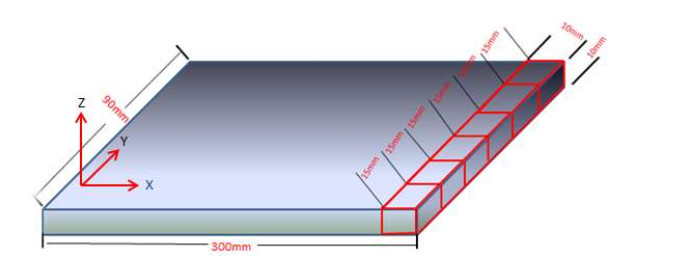









 DownLoad:
DownLoad:

